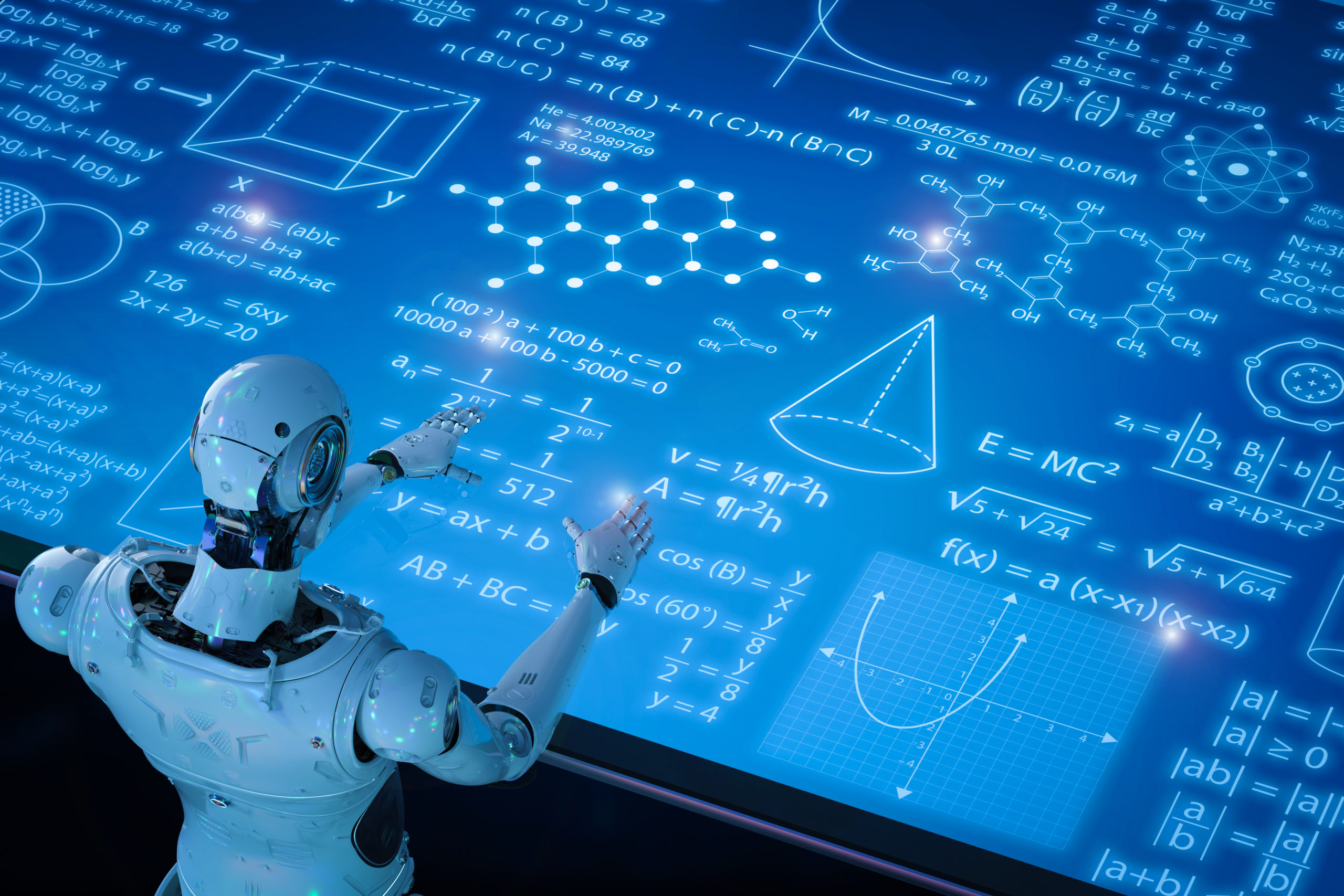Along with technological advances, artificial intelligence (AI) is positioning itself as an innovative ally for learners and teachers. Is AI used in education nowadays? This article will explore what AI is, examples of its implementation, and aspects to consider for its responsible use.
Thinking about intelligence assumes that a lot of abstract and very complex neuronal processes take place in one’s brain. Intelligence allows people to make decisions, learn, reflect, discuss, disagree, and respond to different circumstances in a rational way. But in the past years, the term “artificial intelligence” has gained space in scientific discussions, raising questions regarding the capacity of humans and machines.
Artificial Intelligence – generally abbreviated as AI – is a wide concept used to describe the process of using machines and computers to complete a task by imitating human-thinking patterns. The term itself was used for the first time in 1956, to describe the science and engineering process for the development of intelligent machines and computer programs.
Basic Types of Artificial Intelligence (AI)
Over time, technological advances have made AI evolve and become a complex area with multiple practical applications. Two initial classifications to understand how AI works can be Classical and the Machine Learning – although we will see that these technologies are interestingly complex in their scope.
If you have used different functions in Microsoft Excel, you might remember the “If” function, and all its possible variants. Well, Classical AI follows a similar approach. By writing several sequences of “If-then” commands and other rules of conditional logic, this form of AI makes a device complete a task. Given this feature, classical AI is also known as “rule-based AI”.
On the other hand, Machine Learning (ML) is also part of the AI spectrum, but it deals with higher levels of complexities and advances still being researched up till now. Beyond logical rules, ML makes use of large amounts of data to find, recognize and analyze data, and build algorithmic models which, later, predict values. Its name follows the premise that, with ML, machines are not pre-programmed, but are “learning” how to build algorithms and behaviors.
Different applications of Machine Learning (ML)
Within ML techniques, there are plenty of AI techniques widely used nowadays. Some examples are the following:
- Artificial Neural Networks (ANN): These techniques are complex, and are inspired by the neurological structure of brains and neurons. To operate, ANNs organize their commands and algorithms into three “layers” or artificial neurons: one for data input, another for intermediary processing, and the last one for the information output.
- Deep Learning (DL): DL is actually a higher-level way to use ANNs. In basic terms, DL allows the use of multiple intermediary processing algorithms to generate different outputs or to allow the flow of data in multiple directions to make data processing more efficient for the user of the device.
- Natural Language Processing (NLP): These techniques allow devices to interpret texts (seen in, for example, translation websites and apps) or even generate them. An example of NLP can also be seen when smartphones or banking services perform speech recognition of the user’s voice or identity.
AI for learning process: innovation and challenges
With the emergence of the Fourth Industrial Revolution, education has evolved in the past decades, and new challenges emerge – especially with the urgency of the goals defined by the 2030 Agenda for Sustainable Development. In its 4th goal, the Agenda aims to ensure access to high-quality education for all until the end of the decade. In this regard, AI has become an interesting ally to support the efforts of teachers and learners.
One interesting application of AI in the learning process is the use of Intelligent Tutoring Systems (ITS). These computer systems aim to personalize instruction and feedback through digital devices without the physical presence of a human teacher. ITSs are an example of how deep learning algorithms can allow teachers to program and design the learning experience so that students can learn in a one-on-one format virtually as if it was a “virtual tutor”. These types of technologies, according to Carnegie Mellon University’s research, have shown the potential to increase learning outcomes when either used alone or as a complementary approach.
Even though the use of ITS sounds interesting and innovative, its use implies several challenges. One of them is that its programming demands quite a time and specific know-how of how deep learning works. But from a different point of view, AI can actually be very helpful to support learners’ progress and outcomes over time, even from home. For example, parents who support teenagers with subjects such as algebra or statistics could benefit a lot if their kids had access to ITSs on their laptops or tablets, and had a “virtual tutor” to reinforce those topics.
Its implementation in the general education system would require strong investment in technological devices and in training educators and students on how to use ITS. In developed countries, its use is already visible. But the opposite happens in developing nations, as meaningful portions of their populations have limited or null access to advanced technologies. In this case, its implementation would expand an already-existing learning gap. This is why responsible use is necessary. In this sense, UNESCO has developed certain recommendations for policymakers to keep into account to ensure that AI fosters the achievement of the SDG4 of the 2030 Agenda.
To end, the use of AI in education has a strong potential for improving education and strengthening the learning experience of every student. Its complexity and its quick advances make it an innovative approach that, with a responsible and critical look, can become a powerful ally for teachers and caretakers.
Photo: Phonlamai Photo/Shutterstock
You might also like:
Support us!
All your donations will be used to pay the magazine’s journalists and to support the ongoing costs of maintaining the site.
Share this post
Interested in co-operating with us?
We are open to co-operation from writers and businesses alike. You can reach us on our email at [email protected]/[email protected] and we will get back to you as quick as we can.










